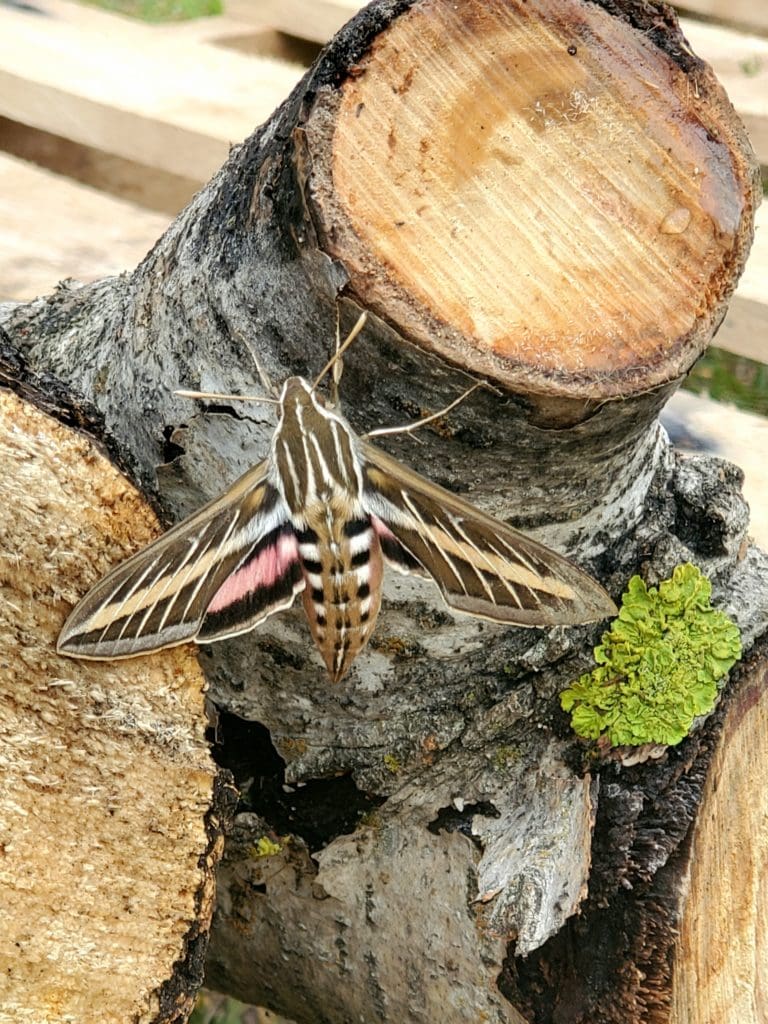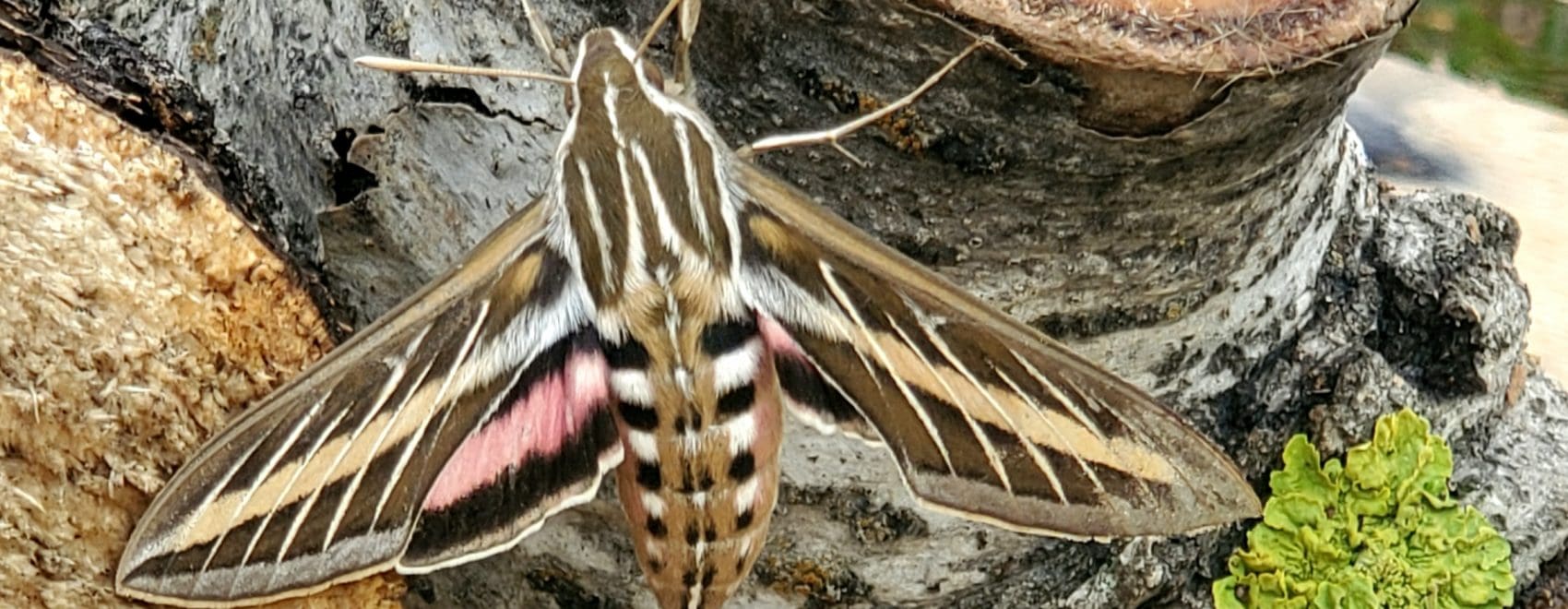Written by Kennedy Zittel, Naturalist

In honor of it being National Moth Week (the last week in July), I wanted to write about one of my favorite moth species – the White-lined Sphinx Moth! The White-lined Sphinx, Hyles lineata, is one of the more common hawk moths to see around here. They are very widespread, occurring throughout most of North America, Southern Canada, and even Central America. This species is one that many people will refer to as a hummingbird moth, as at first glance they do seem hummingbird-like in their behavior of hovering over a flower to feed. Unlike many butterflies that will flap their wings slowly, these moths have to beat their wings very fast to keep their stout bodies in the air… adding to their hummingbird-like appearance.
If you take a closer look though, they look more like furry little teddy bears! Their body is covered in brown fur, as well as six distinct white stripes. They can have a wingspan of around 3 inches, showcasing their beautiful tan and white striped wings. A bright pink stripe can be seen on their hindwing when their wings are open as well.
Though they prefer to fly at night, they can be seen flying around during the day too, especially at dawn and dusk. The white-lined sphinx moth will visit a large variety of flowers, but it prefers flowers with a strong scent. Who doesn’t? If they are feeding during the day, they are seen more often visiting flowers that are brightly colored, but if they are feeding at night they are seen visiting white or lighter colored flowers. This is because white and light colored flowers are easier to see at night against the dark green foliage. This is true for a lot of nocturnal pollinators, if you want your garden visited by the nighttime pollinating crew, plant some native white-colored flowers!
I never realized how many moth species are active during the day until I began working here at Woodland Dunes. When I walk through our Butterfly Garden or down our prairie trails, I am always amazed when I find a fuzzy-bodied moth fluttering around when I too am awake! The next time you are walking around some flowers, stop and take a close look at who is hovering around you. Many diurnal moths (awake during the day) can mimic other species. The Hummingbird Clearwing, Hemaris thysbe, as its name suggests, looks even more similar to a hummingbird than the white-lined sphinx moth! The Snowberry Clearwing, Hemaris diffinis, mimics a bumblebee! There are so many wonderful insects out there that can be seen all around us, if you take a little extra time to look.

